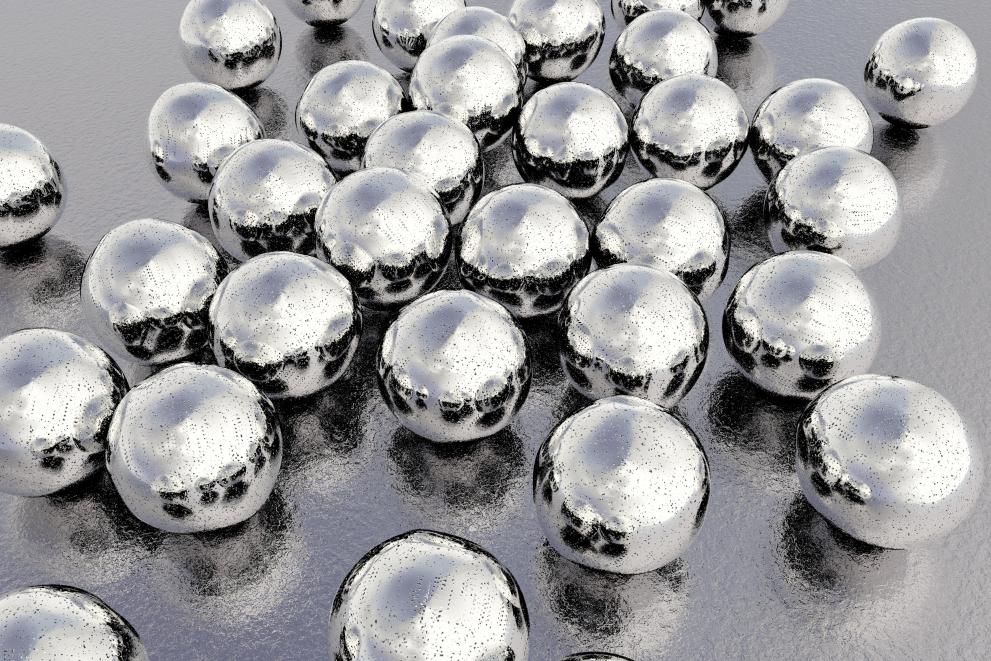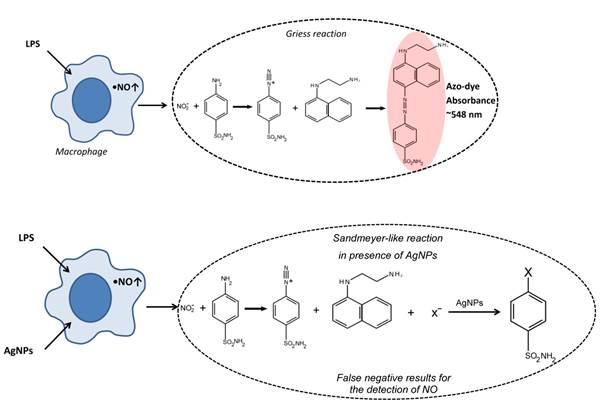
JRC scientists investigated the in vitro response of cells to nanoparticulate silver.
The study showed how a commonly used assay for detecting pro-inflammatory response can be falsified by the presence of the metallic silver itself.
Silver nanoparticles (Ag NP) are amongst the most commonly used nanomaterials (NMs) in consumer products and much research has been focused on elucidating their potential impact on human health.
The potential of Ag NPs to induce cytotoxicity, genotoxicity, or proinflammatory responses was investigated in many in vitro cell studies.
In the case of a pro-inflammatory response, a frequently used end point is the production of nitric oxide (NO), which is indirectly quantified as nitrite (NO2−) which reacts via the so-called Griess reaction to produce an easily detectable pink dye.
Interferences of NMs with classical in vitro toxicity assays have been extensively studied.
However, none of the reports so far investigated potential interferences of nanomaterials with the Griess reaction.

After preliminary studies in a macrophage-like cell culture system that showed anomalous false negative results in the presence of Ag NPs, scientists from the JRC systematically studied the influence of Ag on the detection of NO2− in a cell-free environment using the Griess reaction.
It was found that the presence of metallic but not ionic Ag interfered with the quantification of NO2.
These findings demonstrate yet another substantial interference of NMs with a frequently used in vitro assay. If unnoticed, such an interference might cause false negative results and lead to an impaired hazard assessment of Ag NMs.
Read more in: Kaempfer et al., 'Silver Nanoparticles and Metallic Silver Interfere with the Griess Reaction: Reduction of Azo Dye Formation via a Competing Sandmeyer-Like Reaction', Chem. Res. Toxicol. 30 (2017) 1030–1037 doi:10.1021/acs.chemrestox.6b00280.
Related Content
Details
- Publication date
- 7 July 2017
